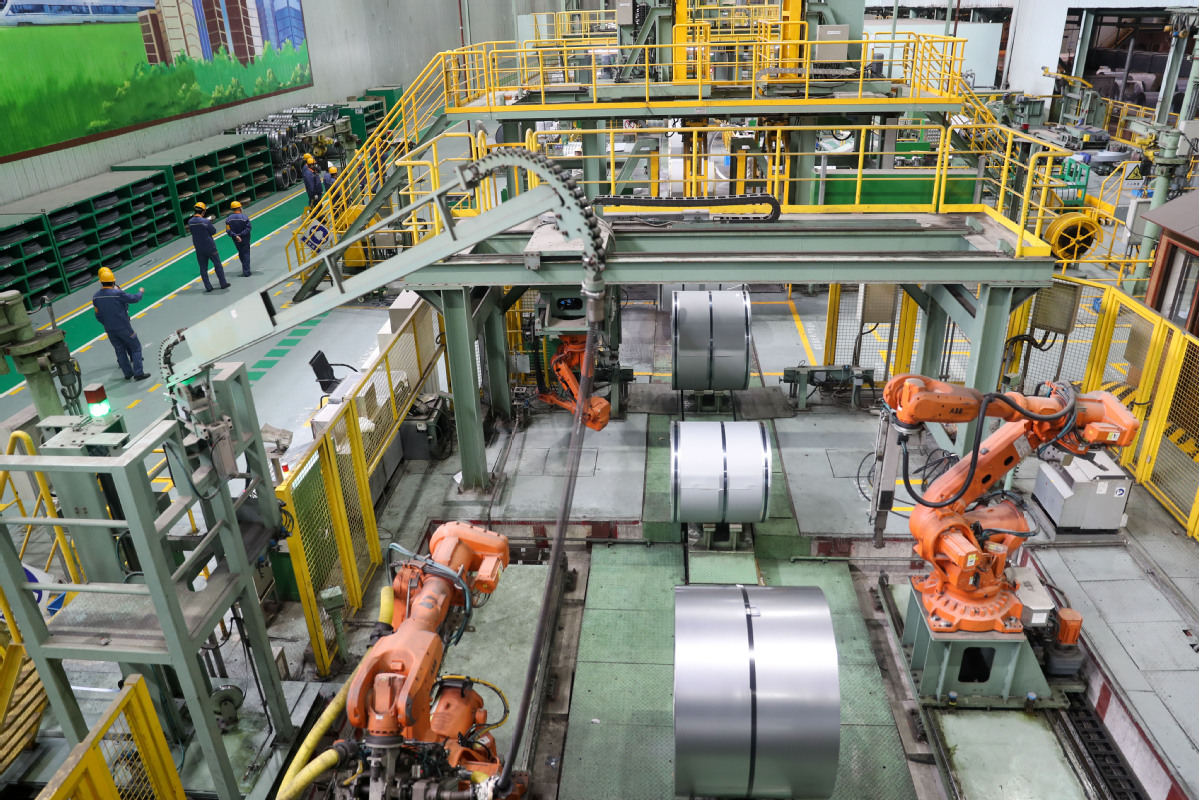From overcapacity cuts to CO2 reductions, steel charts a cleaner course


As a journalist covering, among other things, China's steel industry, I can understand media's fixation with the yearslong campaign of the industry to cut overcapacity.
To be sure, stripping the industry of its overcapacity will help it to reshape itself, so as to align with the country's pursuit of high-quality development.
But, as it transpires, the current buzzword is not overcapacity but carbon-"two carbon goals", to be more precise. The phrase refers to China's commitment to peak carbon emissions by 2030 and achieve carbon neutrality by 2060.
Some experts said the steel industry is likely to hit the emissions peak earlier than the national deadline, perhaps before 2025.
Their arguments are mostly based on the fact that the steel industry is the largest source of carbon emissions among China's 31 manufacturing sectors, contributing 15 percent to 18 percent of the nation's total carbon emissions.
The steel sector needs to press ahead with its carbon emission reduction efforts to peak carbon emissions earlier than the national commitment to buy time for the whole nation.
It has been reported that a draft action plan on the carbon goals for the steel industry is currently pending approval of the government authorities. The draft has not been officially announced yet.
It is learned, however, that the draft will likely urge the steel industry to peak its carbon emissions by 2025 and then reduce emissions by 30 percent by 2030 from the peak in 2025.
There is talk among media-people and experts that the draft may insist that by 2035, carbon emissions should be "drastically" reduced, and by 2060, the sector should achieve deep decarbonization.
The industry will likely face great challenges to achieve such goals.
It is said that about 90 percent of the country's steel mills use blast furnaces, which rely highly on carbon to operate. Thus, upgrading production technologies and procedures, such as resorting to electric arc furnaces, will be a long-term task.
For the initial stage, curbing crude steel output is also a must.
During the first three months of the year, the country's crude steel output hit 271 million metric tons, increasing 15.6 percent year-on-year and 17.3 percent from that in 2019, respectively, data from the China Iron and Steel Association showed.
If compared with that in the last quarter of 2020, the figure declined slightly by 0.03 percent.
Behind the output growth is the demand recovery and perking up consumption in the main downstream industries, but the country is resolute to curb steel output.
China has resolved to cut the output of crude steel and ensure it falls this year, officials said.
The country has exempted import tariffs on some iron and steel products, including pig iron, crude steel, recycled ferrochromium and iron-steel materials, while increasing tariffs on exports of products such as ferrosilicon, ferrochromium and high-purity pig iron.
The authorities concerned said in a statement that the move is expected to support domestic steel output reduction and curb steel industry energy consumption, among other aims such as reducing import costs, expanding steel imports' resources, and promoting the transformation and upgrade of the steel industry and its high-quality development.
Before that, Tangshan, the country's steelmaking heartland, had already tightened production curbs since March.





































